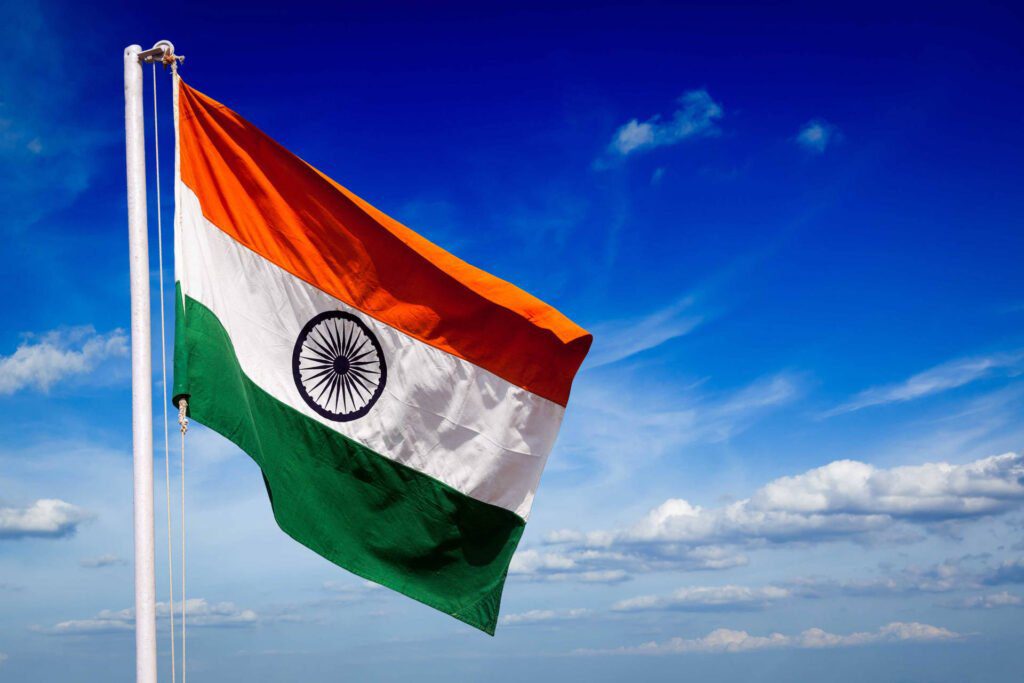
How to Apply to a Indian University 2023, India has become increasingly popular in recent years as a study abroad option for those who want to pursue higher education. India, which has the second-highest population density, is home to some of the greatest thinkers, creators, and artists in the world. The notions of zero, decimal value, and place value system were first introduced to the international academic community by Indian mathematicians. Chess and snakes and ladders are two well-known board games that are invented by Indians and are played all over the world.
Bollywood, the name of its film business, surpasses Hollywood in terms of the volume of films produced annually. India is home to the world’s “Human Calculator,” who independently calculated a challenging numerical sequence in under 28 seconds. All of these demonstrate the intellectual prowess of the Indian educational system. The country’s growth to compete with other developing nations in Asia was unaffected by its vast population or size.
India’s superb education, particularly in engineering, medicine, and business, draws thousands of international students to its universities. The world has just learned about the exceptional training and instruction that institutes in India offer. In fact, India is now regarded as a powerhouse in the production of software needed by most nations. India serves as a living classroom for philosophy and culture in addition to being the location of respectable universities. The world’s oldest living civilization, the Indus Valley, is open to exploration for international students studying in India. In addition to all of this, studying in India won’t put a significant strain on one’s finances.
There are 17,500 colleges and universities in India that admit foreign students. If you choose to pursue your bachelor’s, master’s, or doctoral degree in India, you should be aware of the admissions requirements for foreign students at Indian universities. Fortunately, you’ve come to the right place because we’ve got all the info you need for your admission. We at Edarabia want to help international students get the most out of their time studying abroad in India. To learn more about how to apply to a university in India, How to Apply to a Indian University.

5 Pointers for Applying to an Indian University
Table of Contents
One of the most important steps in the process for an overseas student is submitting an application for admission to a university.
Your ability to attend the university of your choice or pursue higher study in that location will depend on the outcome of this stage. We wish to share some advice with you on how to get admitted to a university in India because we pledge to stay by your side during your international travels.
- Make at least three college applications: We are aware that each student has a vision of their ideal college, a place they would do anything to go because of the school’s reputation in a certain field, the campus’s allure, or the faculty members who teach there. However, there is a selection procedure for universities in India. Depending on the capacity of the institution, some study programmes even have a ceiling on the number of students who can be admitted. So, if you’re a prospective student in India, try to narrow your choices down to three institutions. In the event that you are unable to reach the first option, you might go to the next one in this manner. Check out our thorough list of India’s top universities to help you make your decision.
- Review each university’s admissions procedure in great detail: Even though we have compiled all pertinent details regarding the application process for overseas students at Indian colleges, we are simply presenting the broad guidelines. Each institution has its own unique set of procedures for submitting an application to enrol in one of its courses. Check the section of the university website devoted to overseas applicants, and then review the procedure using the knowledge you have gained from this post.
- Apply as soon as possible, and be correct: Procrastinating about deadlines is a common error made by students. You must break this behaviour as soon as possible if you want to have a successful study abroad experience. The application dates for universities in India follow the academic calendar. Due to the size of India, each university has a unique academic year. As a result, you must verify the deadline for overseas applications and ensure that your documents are sent well in advance of that date. This will give you plenty of time to fix any errors before the application evaluation process starts. In India, universities typically have two semesters: the fall and the spring.
Apply at least three months before July if you want to start during the autumn (July to November). Send in your application for the spring semester (January to April) at least three months before January. Additionally, don’t forget to submit the right paperwork. Do not assume that any copy will do if the instructions specify that it must be an original copy, a photocopy, a certified copy, a translated copy, or anything else. You’ll spend less time, money, and effort if you follow the directions. - In your application materials, be truthful: When you submit an application, universities in India will request your credentials and identification documents, just like any other university in the world. Essay questions are frequently included, especially for graduate and postgraduate programmes. Make sure to write your own letters of motivation or statements of purpose if they are requested of you. Include all the information you believe is necessary for your application. Just like with a job application, you must sell yourself during the student admissions process if you want to be selected.
- Never give up: Not everything in life is sunshine and butterflies. Even though we all strive to be successful in everything we do, there are times when we fall short for reasons beyond our control. Even if your first choice university in India does not accept you, your ambitions are not over. India is home to many reputable universities that take great pride in their instruction. Go to a different university and try your luck there if you are turned down by one. You never know; your second or third pick can end up being the first step towards achieving your objectives.
When should you begin your application for admission?
Due to the numerous dates you must satisfy, applying to institutions takes time. In some circumstances, there is just one timetable for the relevant exams. We therefore want to assist you in scheduling the timing of each admissions process phase. International students are typically accepted by Indian universities during the autumn semester (July to November). You can adhere to the timeframe listed below if you want to jump on board and start your student life in India at this moment.
(In the year before you wish to begin studying in India) October
You need to have started your research on Indian universities by this point. Try to narrow down your list of potential colleges to three that provide the degree programme you are interested in.
November: The required standardised tests (IELTS, TOEFL, GRE, GMAT, SAT, JEE) must be taken by students, and they must then wait for their scores.
December: The JEE makes test results public. Students should then get the paperwork ready for application.
January: is the deadline for international students to begin applying to their top universities.
March: This is often when international student admissions applications close.
April: Most colleges send out their decisions about admissions applications. During this time, anticipate getting a response.
Those who are selected can begin applying for scholarships, school loans, and visas in May.
June: The best time to plan your trip to India, organise your funds, and check into lodging choices in India is right now.
July: The autumn semester begins. You should have arrived in India by now and been familiar with the local way of life.
Steps for Applying to a University in India
When you know what to do, applying to a university in India could be easy and stress-free. Applying will be simple because admissions procedures at most universities are comparable. How to Apply to a Indian University are as follows:
- Determine whether you must submit a direct application to your top universities.
International students can submit their admissions applications directly to the university for the majority of academic programmes offered in India.
However, applicants may use the DASA (Direct Admission of Students Abroad) Scheme to enrol in engineering, architecture, or planning study programmes at National Institutes of Technology and publicly funded colleges and universities.
An overseas applicant may make a request for admission to many Indian universities through the DASA. For undergraduate applicants, the DASA Scheme does, however, include an age restriction.
Only pupils who are under 25 are accepted. You can apply directly to the university of your choice, independent of your study programme, if you are uncomfortable using this centralised system.
2. Examine the necessary conditions.
Every time you try to submit an application for admission to a university in India, you will be required to submit documents. Academic transcripts, a completed application form, and other certifications will all be on the list. For a complete list of the specific documents you need to send, see below:
- current passport
- properly completed entrance application
- official copies of academic records
- A detailed resume or curriculum vitae
- scores on language tests (for non-native English speakers)
- Statement of Purpose or Letter of Motivation
- Bank statements or a letter of sponsorship, in the case of students who are self-financing their education, are acceptable forms of financial documentation.
- Letters of recommendation (from previous teachers or employers)
Note: Keep in mind that certifications, such as test results for a language, shouldn’t be issued more than two years after the date of acquisition. In the same way, translated English versions of papers written in another language are necessary.
if required, take standardised tests.
Scores on particular standardised tests are required by some Indian universities. Determine which of these exams you must take and get a test schedule a few months before you want to begin your studies in India.
The GRE (Graduate Record Examination), GMAT (Graduate Management Admission Test), SAT (Scholastic Aptitude Test), and English language proficiency tests like the TOEFL (Test of English as a Foreign Language) and IELTS (International English Language Testing System) are the tests that universities ask for the most frequently.
Moreover, get ready to take the Joint Entrance Examination (JEE), which is required for admission to undergraduate study programmes, if you want to apply to one of the Indian IIT (Indian Institute of Technology) universities. JEE typically takes place in April, with results released in December.
Secure your paperwork, then send your application.
Submit your application to your chosen university (or through the DASA) as soon as you have all of the required documentation and have passed the required tests. India requires a fee for all study programme entrance applications. If your application is accepted by the DASA, you will typically be required to pay a total of $4,300, which is broken down into two payments: $300 for the registration fee, which goes to the university of your choice, and $4,000 for your first-semester tuition.
*Under the DASA, international students from Pakistan, Sri Lanka, and South Asian Association for Regional Cooperation (SAARC) nations are eligible for a 50% tuition cost waiver.
Apply for a student visa after waiting for your admissions confirmation.
You will receive a letter of acceptance from the university after your application is accepted. This document is essential for the following phase of your journey, which is the application for an Indian student visa. As long as all prerequisites and costs have been paid, applying for a student visa is just as simple as applying for admission. You can enter India through any port if your application for a student visa there has been granted. In the meanwhile, you can apply for a provisional visa that will let you enter the country in order to personally organise your admission if you haven’t yet acquired one many months before to your anticipated trip into India.
Sharing is Caring 🙂

